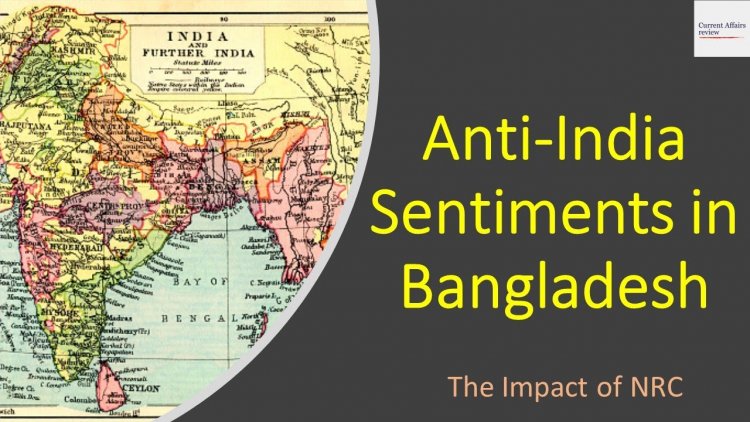Anti-India Sentiment in Bangladesh
STORIES, ANALYSES, EXPERT VIEWS

There is some evidence to suggest that the campaign to boycott Indian goods and medical services is being orchestrated by a handful of expatriate Bangladeshi YouTubers based in Europe and the United States of America. Their somewhat hysterical tirades, writes Swapan Dasgupta (journalist and Member of the Rajya Sabha; has held editorial posts at Statesman, Daily Telegraph, The Times of India, Indian Express and India Today) “haven’t yet found reflection in Bangladesh’s mainstream media, but that could change.
“Anti-India sentiment has been a feature of the Bangladeshi political landscape since the establishment of the country in 1971. Even before the euphoria over liberation had subsided, there were charges levelled at the Indian army of stripping the newly-formed country of valuable assets left behind by both Pakistani industrialists and the army…..”
Two main sources of anti-India sentiment
In the main, however, according to Dasgupta “anti-India sentiments in post-1971 Bangladesh stemmed from two main sources.”
Strong Muslim identity: First, "there was the reservoir of loyalty to a strong Muslim identity that didn’t disappear with East Pakistan in 1971. The mythology around the liberation struggle cast the pro-Pakistan elements among Bengali-speakers as a small minority, mainly attached to the Jamaat-e-Islami, Nizam-e-Islam, and factions of the Muslim League. Many of them worked as collaborators during the liberation struggle and suffered terrible recriminations subsequently. However, it is important to note that the Muslim religious parties always enjoyed the support of at least 25% of the electorate. With a large cadre base at its command, they always played a pre-eminent role in whipping up anti-India feelings, not least by targeting the local Hindu population.”
Bangladeshi nationalism: Secondly, “the religious parties have always been complemented by the strand of Bangladeshi nationalism that coalesced around General Ziaur Rahman after 1975. Unlike the religious parties that were stigmatised for their pro-Pakistan stand during the liberation war, the Bangladesh Nationalist Party has complemented General Zia’s role in 1971 with a strong belief in the Islamic foundations of Bangladesh. Much of this posturing was necessitated by the need to distinguish the BNP from the ‘secular’ Bengali nationalism associated with the Awami League. The Awami League has always cast the BNP as comprising anti-liberation forces, mainly because of Zia’s rehabilitation of erstwhile pro-Pakistan leaders and, subsequently, the electoral alliance Khaleda Zia forged with the Jamaat.”
Perception of India as exploitative
Predictably, "these conflicting traditions have directly impacted the way India has been perceived in Bangladesh. Since Prime Minister Sheikh Hasina Wajed assumed power, the Opposition has propagated the belief that the Awami League has held on to power, despite compromising the lofty standards of democracy, solely because of the unflinching support of successive governments in Delhi. It has also been suggested that India has an exploitative relationship with Bangladesh, depriving it of its share of river waters and using it as a market for consumer goods.”
In the circumstance, Dasgupta argues the “Boycott India may create short-term hiccups for Indian consumer goods…” However, “the lack of any response within India to the Boycott India campaign in Bangladesh may well trigger more desperate moves by the boycotters. If this happens, it would be injudicious of India to respond in anger. Instead, it would be far more appropriate to initiate steps to ensure that Bangladeshi business is benefited by India’s economic growth……”
In conclusion, “anti-Indianism in Bangladesh will never die altogether but it will lose its sting the more that country gets integrated into the Indian market.”
















